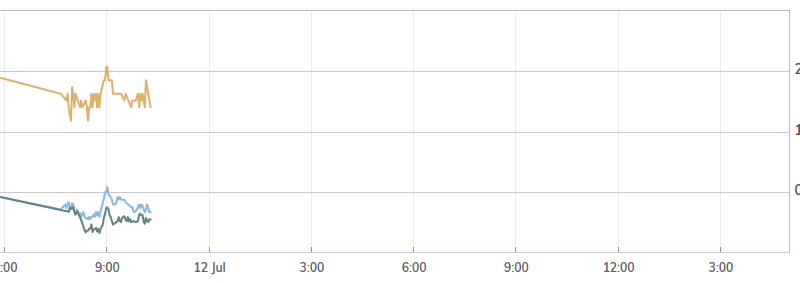Yield curve extends steepening in wake of CPI data
U.S. Treasury yields climbed sharply on Thursday after a stronger-than-expected June inflation reading weighed on demand for an auction of long-dated government paper.
What are Treasurys doing?
The 10-year Treasury note yield TMUBMUSD10Y, -0.42% rose 6.1 basis points to a four-week high of 2.122%, while the 30-year bond yield TMUBMUSD30Y, -0.52% climbed 7.2 basis points to 2.642%, its highest since May 30. The 2-year note rate TMUBMUSD02Y, -0.82% was up 2.7 basis points to 1.852%.
The gap between short-term yields and long-term yields, or the so-called yield curve, continued to widen from Wednesday as expectations for a 25 to 50 basis point cut in the federal funds rate in July gained ground. The 2-year/10-year spread stands at around 27 basis points, from 15 basis points at the beginning of the weeks.
What’s driving Treasurys?
Stronger-than-expected inflation data hurt appetite for a $16 billion auction for 30-year Treasury bonds, which are more susceptible to the corrosive impact of inflation than shorter-dated maturities. The debt sale tailed by 3 basis points, a sign of insufficient demand. The tail is the gap between the highest yield the Treasury sold in the auction and the highest yield expected when the auction began — the “when issued” level.
June’s consumer price index rose by 0.1%, and the core gauge that strips out for volatile food and energy prices rose by 0.3%. Both measures edged above expectations from MarketWatch polled economists.
Yet market participants say the inflation data is unlikely to sway the Federal Reserve from carrying out rate-cuts, though it could weigh on the probability of a more aggressive half percentage point cut. Traders on the fed fund futures market are now pricing in am 18% chance of a 50 basis point rate-cut in July 31, from 30% the day before, based on CME Group data.
Fed Chairman Jerome Powell told Senate lawmakers that the U.S. central bank needed to defend its commitment to the symmetric nature of its 2% inflation target. Investors said his testimony to Congress this week suggested the U.S. central bank would ease policy in July.
What did market participants’ say?
“The Fed has been trying to defend the inflation target through their communication for a while now, but it took Powell’s dovish comments about focusing on downside risks to the economy and his dismissal of this morning’s inflation pickup to finally force the yield curve to steepen out,” wrote Thomas Simons, senior money market economist at Jefferies, who also described the results of the auction as “borderline shocking.”
“The CPI data won’t change Powell’s mind,” Frances Donald, chief economist for Manulife Asset Management, told MarketWatch. She expected 25 basis point rate cuts each in July and September.

